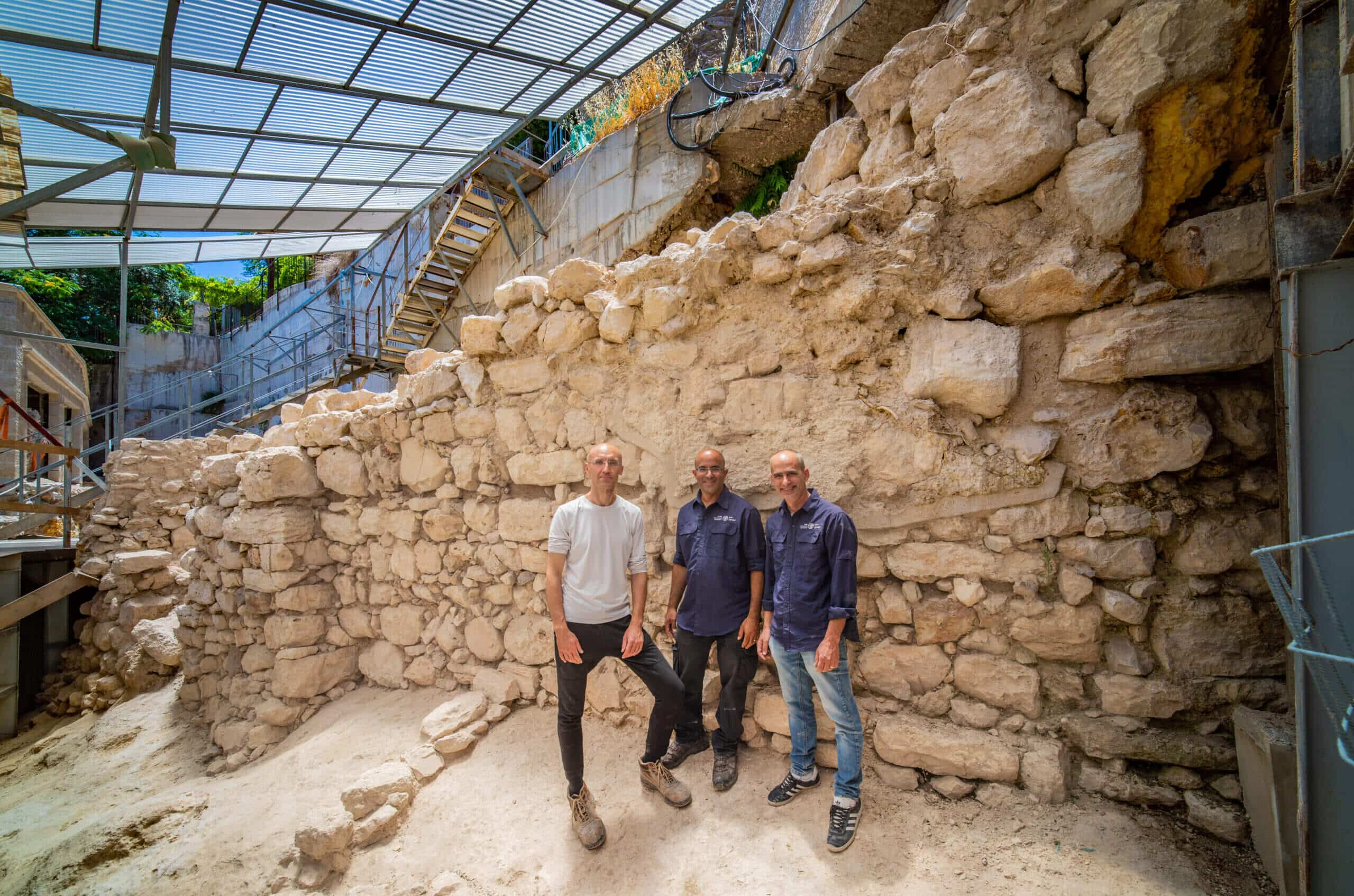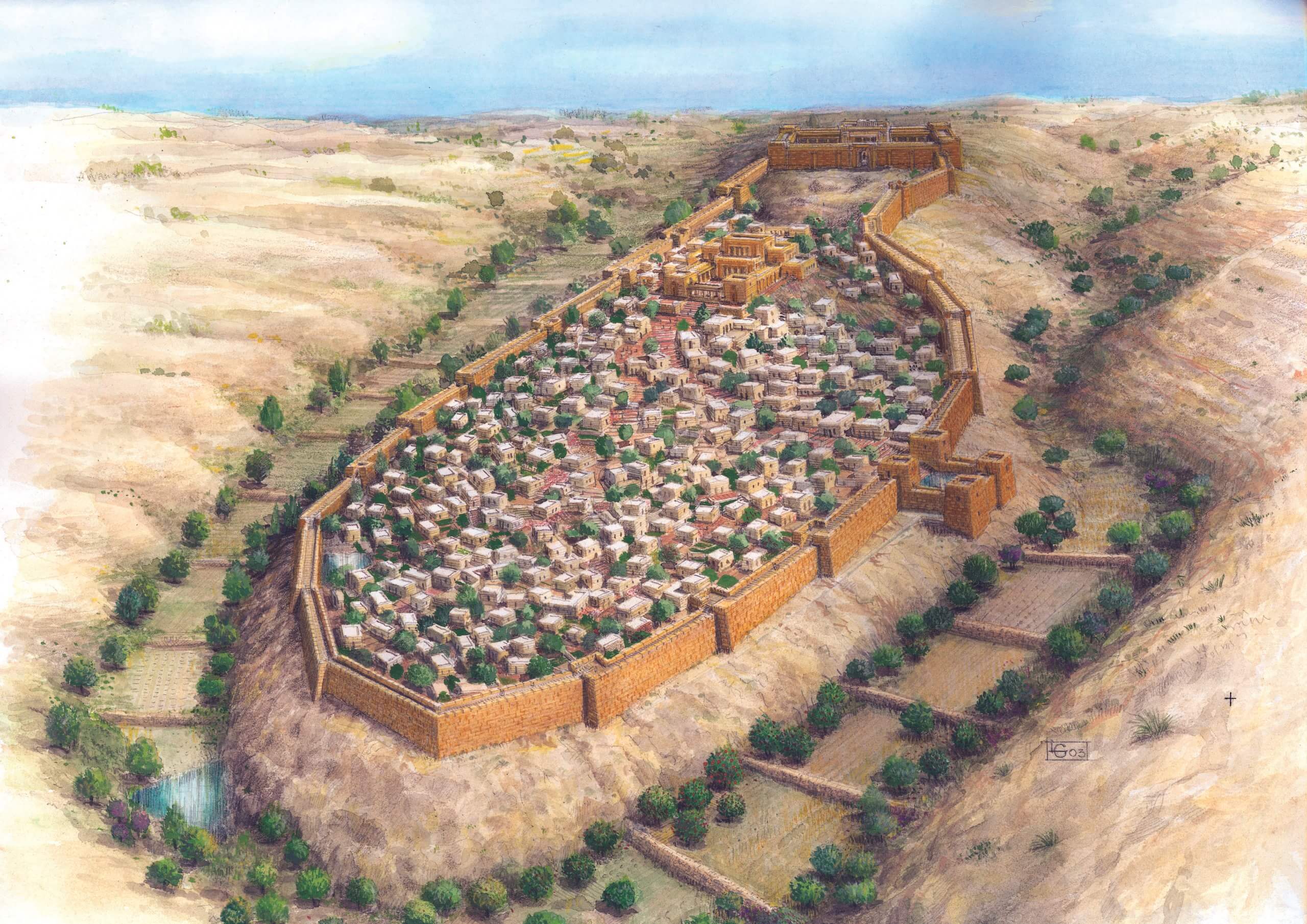According to the researchers, this find connects additional sections of the wall, which were uncovered decades ago, and for the first time sequentially outlines the eastern defense line of the city on the eve of the Babylonian destruction. Near the wall were discovered jug handles that were in use on the eve of the destruction, a Babylonian seal and a seal impression bearing a name in ancient Hebrew script

"And את-חומ֥ת ְרושלַ֖ם סבִ֑יב נָֽתְכו֙ קָּ֣יל קַַׂדִּ֔ים אשְזר rab-tabachִֽים" (XNUMX Kings, XNUMX, XNUMX)
As part of archaeological excavations being conducted in the City of David National Park, remains of the city wall were discovered, which was built in the Iron Age - the days of the First Temple in the Kingdom of Judah, to protect Jerusalem from the east. Excavations are being conducted in the City of David National Park on behalf of the Antiquities Authority, in collaboration with the El City of David Association (ELAD), as part of the development of the national park.
According to the directors of the excavation, Dr. Philip Wakusbowitz from the Center for the Study of Ancient Jerusalem and Dr. Joe Uziel and Ortel Kalef from the Antiquities Authority:The city walls protected Jerusalem from several attacks during the reign of the kings of Judah, until the arrival of the Babylonians who managed to breach the walls and conquer the city. The remains of the ruins can be seen in the archaeological excavations, which over the years revealed many evidences of the destruction, including buildings that were burned to the ground. However, not everything was destroyed, and parts of the walls, which stood and protected the city for decades and more, remain standing to this very day."
The newly uncovered section connects two sections previously excavated on the eastern slope. In the XNUMXs, the British archaeologist Kathleen Kenyon uncovered a section of the wall in the northern part of the slope, and dated it to the days of the Kingdom of Judah. About a decade later, the archaeologist Prof. Yigal Shilo revealed a long section of the wall, in the excavations that exist in the southern part of the slope. Over the years there have been claims that despite the impressive nature of the remains, these walls should not be seen as the remains of a wall. With the revelation of the new section that connects the discoveries from the past, it seems that the debate has been decided, and that it is unequivocally the eastern wall of ancient Jerusalem.

Another thirty meters of wall
Restoring sections previously dismantled during excavations at the beginning of the 20th century, makes it possible to follow almost another 30 meters of the wall that survived to a height of 2.5 meters and a width of up to 5 meters. In the book of 30 Kings, XNUMX, there is a description of the conquest of the city by the Babylonians: " וְאת-קומֹת ְרושלַ֖ם סִ֑יב נָֽתְץ֙ כָּלַ֣יל שַַׂדִּ֔ים אשַּזְִ֔ים אשְר רב-טבִָּים" (XNUMX Kings, XNUMX, XNUMX). It seems that the Babylonians were unable to break down the eastern side of the wall, possibly due to the sharp steepness of the eastern slope of the City of David, which slopes towards the Kidron at an angle of XNUMX degrees. The findings of the destruction can be seen in a building that stood next to the wall and was uncovered during the previous excavation seasons: inside the building were discovered rows of storage jars, which were broken in the ruins of the building when it burned and collapsed. On the handles of the jugs there are "rosette" imprints in the shape of a rose, which are identified with the end of the period of the Kingdom of Judah.
Near the wall, a Babylonian imprint seal made of stone was discovered with a depiction of a figure standing in front of stylized symbols of the two Babylonian gods Marduk and Nebo. Not far from the place where the seal was found, a bulla (seal made of clay) of a Jewish man named "Zepan" was also discovered.
The findings of the excavation will be presented at the Antiquities Authority conference "Innovations for the study of the archeology of Jerusalem and its surroundings" this coming October.
More of the topic in Hayadan:
- The Earth's magnetic field tells the story of the destruction of the First Temple
- Fragments of new scrolls, the skeleton of a 6,000-year-old girl and the oldest complete basket in the world were discovered in David Yehuda
- Uncovered on Mount Zion: the southern wall of Jerusalem from the Hasmonean period

One response
How do you know the exact date of the destruction (Tisha B'av?)
Is there any mention of the date or even the season of the year anywhere other than in the Bible?